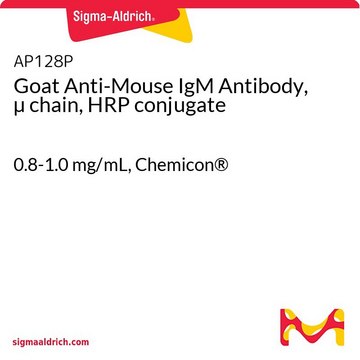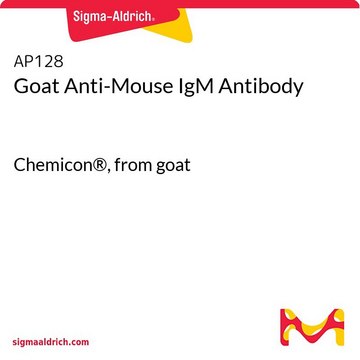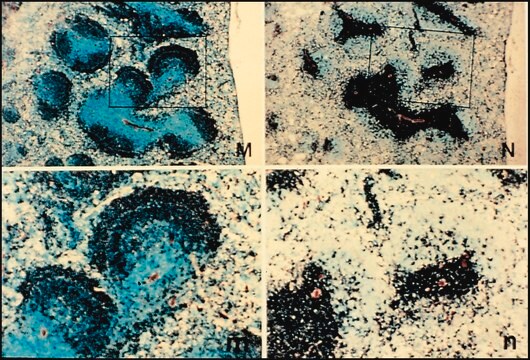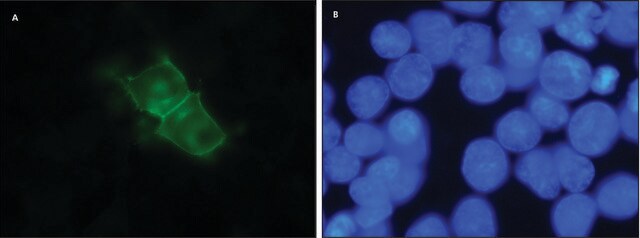Wichtige Dokumente
A4540
Anti-Mouse IgM (μ-chain specific)−Agarose antibody produced in goat
IgG fraction of antiserum, saline suspension
Synonym(e):
Anti-Mouse IgM, Goat Anti-Mouse IgM
About This Item
Empfohlene Produkte
Biologische Quelle
goat
Qualitätsniveau
Konjugat
agarose conjugate
Antikörperform
IgG fraction of antiserum
Antikörper-Produkttyp
secondary antibodies
Klon
polyclonal
Form
saline suspension
Speziesreaktivität
mouse
Kennzeichnungsgrad
≥5 mg per mL
Methode(n)
Ouchterlony double diffusion: suitable
Kapazität
0.4 mg binding capacity
Lagertemp.
2-8°C
Posttranslationale Modifikation Target
unmodified
Allgemeine Beschreibung
Goat anti-mouse IgM (μ-chain specific)-agarose antibody is specific for mouse IgM when tested against purified mouse IgA, IgG (all subclasses), and IgM myeloma proteins.
Anwendung
Chromatin immunoprecipitation (1 paper)
Biochem./physiol. Wirkung
Physikalische Form
Haftungsausschluss
Sie haben nicht das passende Produkt gefunden?
Probieren Sie unser Produkt-Auswahlhilfe. aus.
Lagerklassenschlüssel
10 - Combustible liquids
WGK
WGK 3
Flammpunkt (°F)
Not applicable
Flammpunkt (°C)
Not applicable
Hier finden Sie alle aktuellen Versionen:
Analysenzertifikate (COA)
Die passende Version wird nicht angezeigt?
Wenn Sie eine bestimmte Version benötigen, können Sie anhand der Lot- oder Chargennummer nach einem spezifischen Zertifikat suchen.
Besitzen Sie dieses Produkt bereits?
In der Dokumentenbibliothek finden Sie die Dokumentation zu den Produkten, die Sie kürzlich erworben haben.
Kunden haben sich ebenfalls angesehen
Unser Team von Wissenschaftlern verfügt über Erfahrung in allen Forschungsbereichen einschließlich Life Science, Materialwissenschaften, chemischer Synthese, Chromatographie, Analytik und vielen mehr..
Setzen Sie sich mit dem technischen Dienst in Verbindung.







